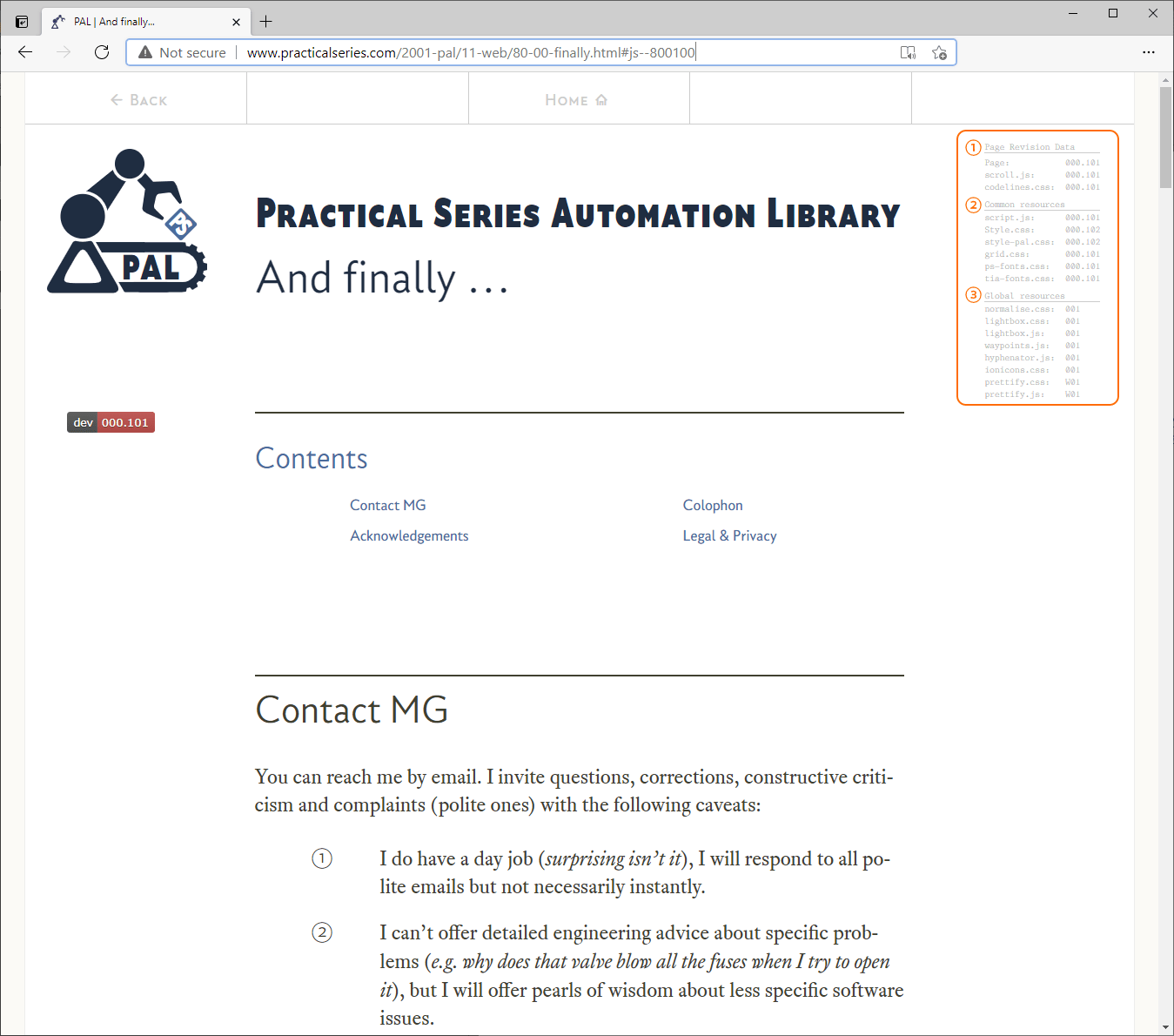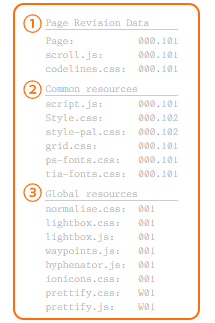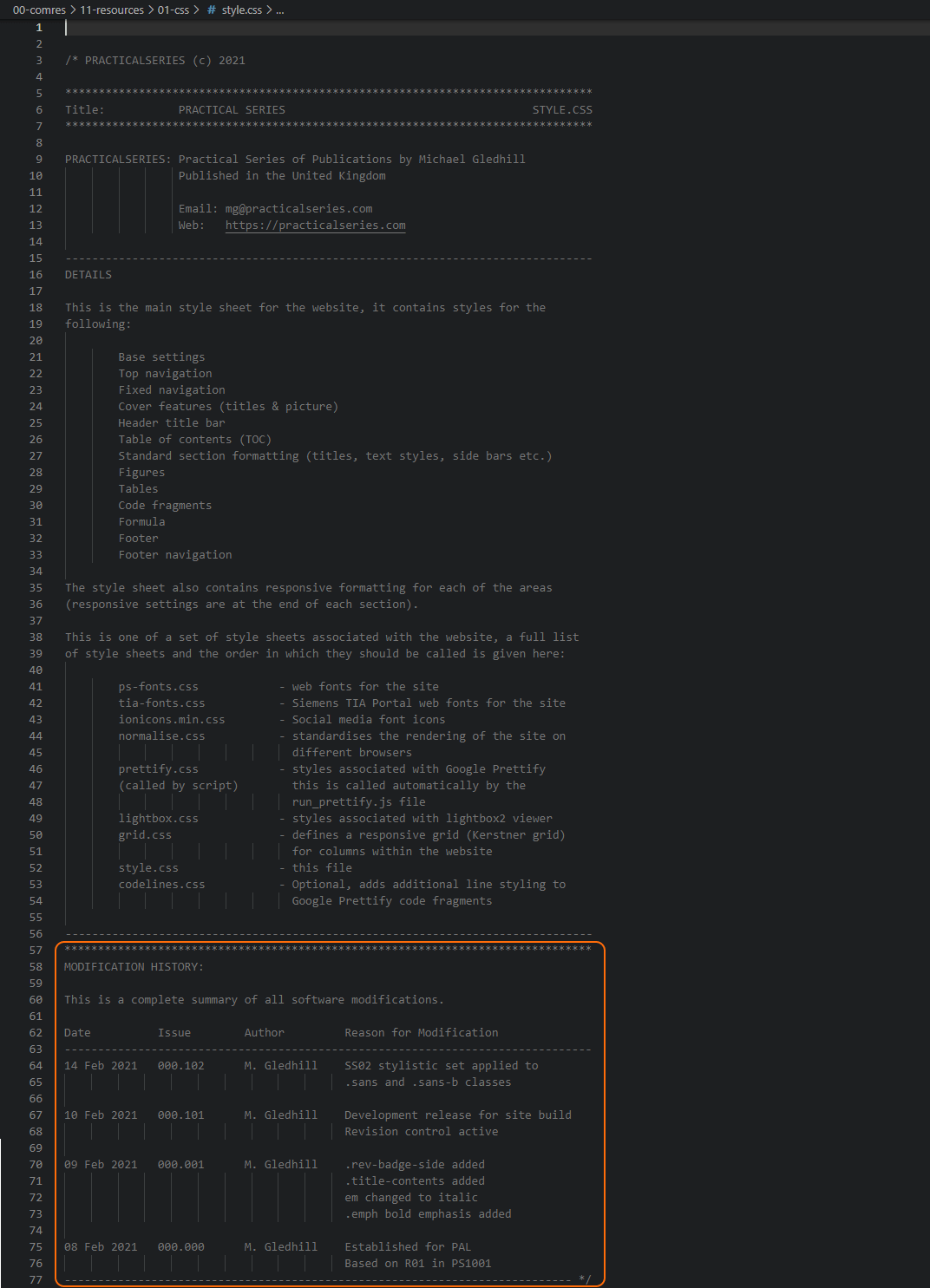4.6
Individual page and file revision numbers
All the files associated with a web page (HTML, CSS, JavaScript and jQuery) have their own revision number. The current file revisions for all components of a web page are displayed at the top right of all web pages:
This can be seen in more detail below:
The Page revision data, point 1, shows the current revision of all the files associated with the particular web page.
The Common resources, point 2, shows the revision of the standard files that are common to all web pages.
Finally, the Global resources, point 3, shows the revision of all third party files (these are normalised revision generated within the project, i.e. project revision 001 of normailse.css reflects the actual file build of 8.0.1, the association between the normalised project build and the actual third party build is listed in the revision table at the start of each file).
The numbering of the webpage (or file) revision nnn.amm is an incremental numbering system. In this system nnn reflects the current version of the software; typically, the first properly released software will be 001. Previous development versions will be 000.
The numbers after the decimal point (amm) reflect development and test modification to the current revision (for software modifications), in this system a reflects the current status of the software as follows:
| First digit (a) | Meaning | Description | |
|---|---|---|---|
| 0 | Released mm will be 00 |
Page/file is released at version nnn (i.e. nnn.000) | |
| 1-7 | Development | Page/file is under development and has not been tested | |
| 8 | Publication | Page/file has been published (on the webserver) for live testing/td> | |
| Table 4.3 Website revision number (first digit) | |||
The remaining numbers (mm), are incremental build numbers for the current revision (this allows development tracking).
- A release version of a page or file will have revision 001.000, 002.000,003.000 &c. I.e. the numbers after the decimal point are all zero. The first development of the software at release 003 would have revision 003.101.
The Global resources revisions, point 3, in Figure 4.2 only have the first three digits (nnn), third party software is always at a released version.



